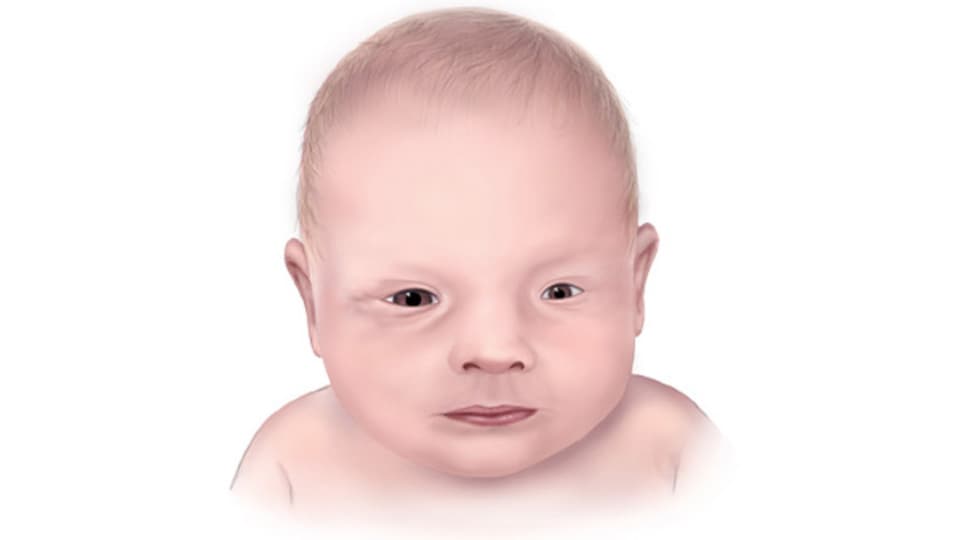Key points
- Anophthalmia (an-off-thal-mia) and microphthalmia (mic-roff-thal-mia) are birth defects of a baby’s eye(s).
- Anophthalmia and microphthalmia often result in blindness or limited vision.
- Researchers estimate that 1 in every 5,100 babies is born with anophthalmia or microphthalmia in the United States.
What it is
Anophthalmia
Anophthalmia is a birth defect where a baby is born without one or both eyes.

Microphthalmia
Microphthalmia is a birth defect in which one or both eyes did not develop fully, so they are small.

Anophthalmia and microphthalmia develop during pregnancy and can occur alone, with other birth defects, or as part of a syndrome.
Risk factors
The causes of anophthalmia and microphthalmia among most infants are unknown. Some known causes of anophthalmia or microphthalmia include:
Diagnosis
Anophthalmia and microphthalmia can either be diagnosed during pregnancy or after birth.
During pregnancy, healthcare providers can identify anophthalmia and microphthalmia through an ultrasound or a CT scan (special x-ray test).
After birth, a provider can identify anophthalmia and microphthalmia by examining the baby. The provider should also perform a thorough physical exam to look for any other birth defects that may be present.
Symptom management
There is no treatment available to create a new eye or completely restore vision for those affected by anophthalmia or microphthalmia. A baby with one of these conditions should be seen by a team of specialized eye doctors, including:
- An ophthalmologist, a provider specially trained to care for eyes
- An ocularist, a provider specially trained to make and fit prosthetic eyes
- An oculoplastic surgeon, a provider who specializes in surgery for the eye and eye socket
The eye sockets are critical for a baby’s face to grow and develop properly. If a baby has one of these conditions, the bones that shape the eye socket may not grow properly. Babies can be fitted with a plastic structure called a conformer that can help the eye socket and bones to grow. As babies get older, these devices will need to be enlarged to help expand the eye socket. Also, as children age, they can be fitted for an artificial eye.
A team of eye specialists should frequently monitor children with these conditions early in life. If other conditions arise, like a cataract or detached retina, children might need surgery.
If anophthalmia or microphthalmia affects only one eye, the ophthalmologist can suggest ways to protect sight in the healthy eye. It is important to talk to their team of eye specialists to determine the best plan of action.
Babies born with these conditions can often benefit from early intervention and therapy to help their development and mobility.
Resources
The views of this organization are its own and do not reflect the official position of CDC.
International Children's Anophthalmia Network: A group of families and professionals supporting individuals who want to learn more about microphthalmia and anophthalmia.
- Plaisancié J, Ceroni F, Holt R, Zazo Seco C, Calvas P, Chassaing N, Ragge NK. Genetics of anophthalmia and microphthalmia. Part 1: Non-syndromic anophthalmia/microphthalmia. Human Genetics. 2019 Sep 11;138:799-830.
- Verma AS, FitzPatrick DR. Anophthalmia and microphthalmia. Orphanet journal of rare diseases. 2007 Dec;2:1-8.
- Stallings, E. B., Isenburg, J. L., Rutkowski, R. E., Kirby, R. S., Nembhard, W.N., Sandidge, T., Villavicencio, S., Nguyen, H. H., McMahon, D. M., Nestoridi, E., Pabst, L. J., for the National Birth Defects Prevention Network. National population-based estimates for major birth defects, 2016–2020. Birth Defects Research. 2024 Jan;116(1), e2301.
